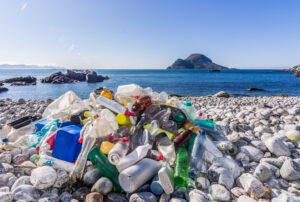The glow of last week’s New Year’s celebrations is starting to fade – how are you feeling about your New Year’s Resolutions? If you’re still looking for some, might we suggest making some resolutions for wildlife? It’s easier than you might think to make a difference for the wonderful plants, animals, and other creatures that share our planet with us, and there are enough options for everyone to find something that speaks to them.
- Wonder About Waste

The management of human trash – i.e., pollution – has taken on new urgency as research documents the ubiquity and harmful effects of microplastics, especially in our oceans. Some of the largest sources of microplastic pollution include fragments of vehicle tires, laundry water from synthetic fibers, and the breakdown of larger plastic trash like bottles and bags. The Oceanic Society has a great list of things you can do to help curb microplastics, from at-home laundry solutions to activism for large-scale legislative changes. If you choose advocacy, remember to do your research and support responsible policies – for example, plastic straw bans were a popular early measure to combat plastic pollution, but research has shown that plastic straws comprise less than 0.025% of plastic waste, and many disabled people rely on plastic straws to eat and drink safely.
- Look to Your Local Lands
Did you know that Massachusetts has hundreds of local conservation commissions? Chances are good your town or city has one, and conservation commissions are staffed by volunteers who have the important job of protecting Massachusetts’ land, water, and natural resources. These commissions are empowered by law, including the Conservation Commission Act (MGL Chapter 40 section 8C) for open space protection and the Wetlands Protection Act (MGL Chapter 131 section 40). Even if you don’t have the time to serve as a member of your local commission, many commissions have open meetings and committees for interested people. Read more about them here!
- Provide for Pollinators
Even just a couple of pots of native wildflowers on a balcony or in a shared yard can mean the difference between life and death for pollinator insects. These bees, flies, butterflies, and moths play a vital role in keeping native plant populations healthy, and they depend on nectar and pollen that can be very hard to find in densely populated areas or during the early spring and late fall. The Native Plant Trust has a Plant Finder Tool that lets would-be gardeners search for plants using numerous factors, such as size, flower color, blooming time, attractiveness to pollinators, sun, soil, and water requirements, and more. The Xerces Society also offers an excellent, detailed guide to pollinator-friendly plants for Northeast gardener.
- Adventure and Admire

No one will work to save what they don’t know about or can’t appreciate! Setting aside time to spend outdoors observing the natural world is one of the best ways to both inspire and educate yourself. The first step of the scientific method is to make observations, so by observing something as simple as the plants alongside a community pathway or which butterflies show up first in spring, you can provide valuable data for real conservation science. If you log your sightings on an aggregator like iNaturalist, you can get ID help from the pros and know that your observations are helping protect the natural areas you love.
